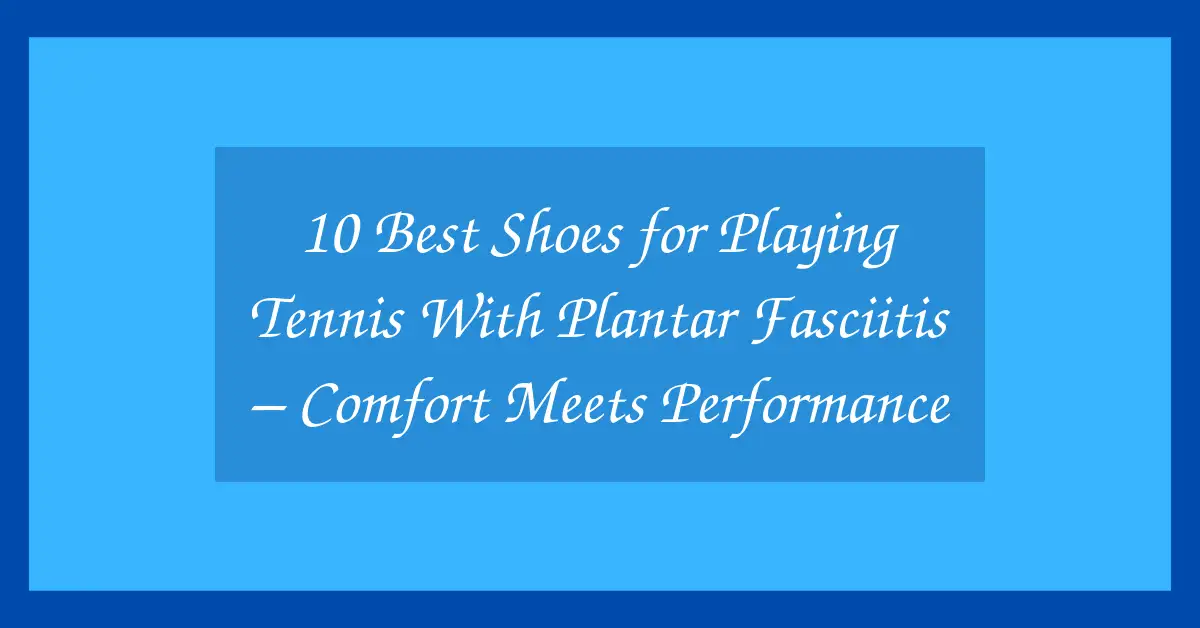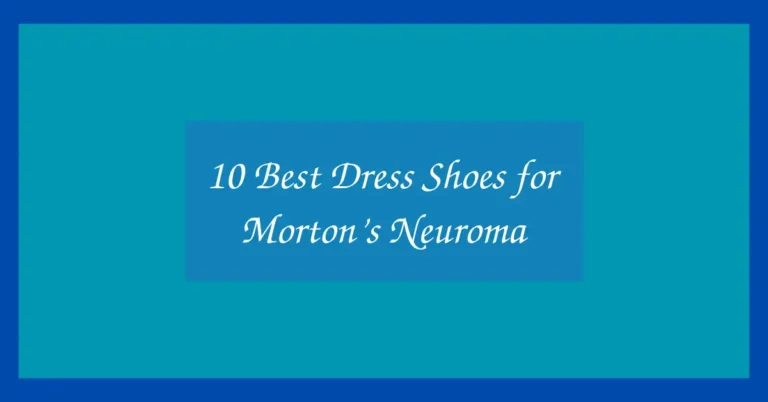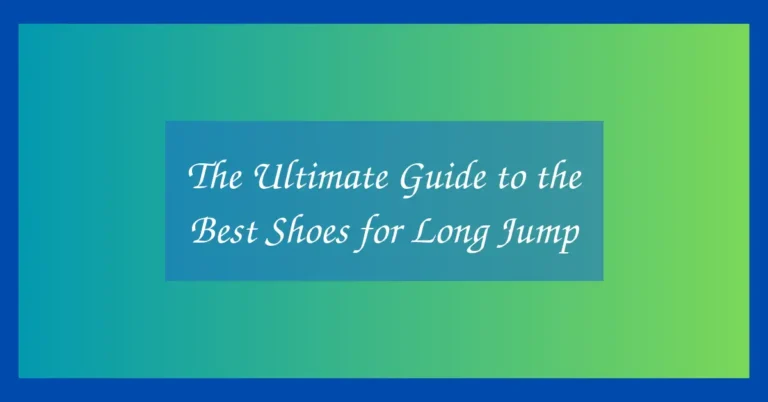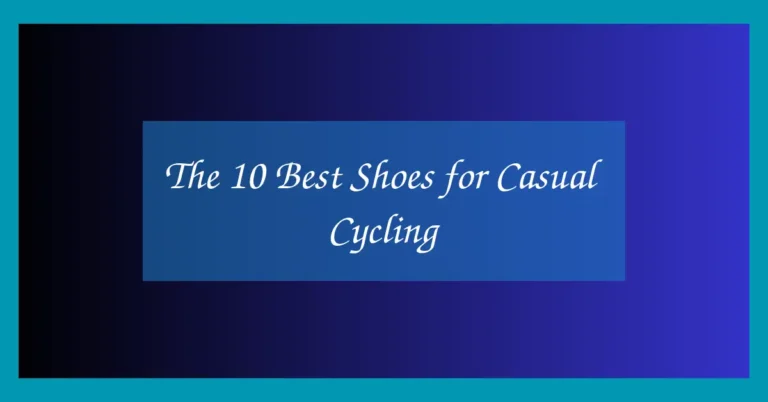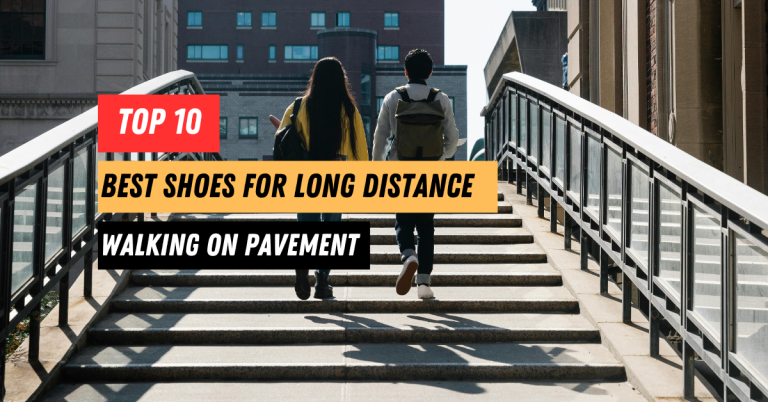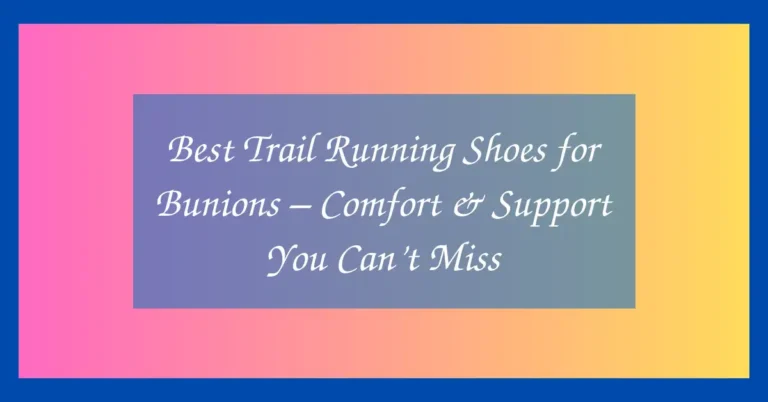10 Best Shoes for Playing Tennis With Plantar Fasciitis – Comfort Meets Performance
Choosing the best shoes for playing tennis with plantar fasciitis is not just about comfort it’s about protection, stability, and preventing further foot pain. When you’re dealing with this condition, every pivot, jump, and sprint on the court can worsen your discomfort unless you’re wearing the right pair.
We’ve carefully selected and reviewed the top tennis shoes designed to support your arches, cushion your heels, and absorb shock efficiently. These options help reduce strain during play while still offering the responsiveness and agility competitive tennis demands.
Best Shoes for Playing Tennis With Plantar Fasciitis
1. ASICS Gel-Resolution 9
The ASICS Gel-Resolution 9 is a popular choice among tennis players with plantar fasciitis due to its superior cushioning system. The shoe is equipped with GEL™ technology in the rearfoot and forefoot, which helps absorb impact and reduce stress on the heel.
Its DYNAWALL™ and DYNAWRAP™ technologies add midfoot stability and support, which are crucial for side-to-side movements on the court. This design minimizes arch strain and provides balanced foot alignment during matches.
Another highlight is the AHAR® outsole which increases durability and allows smooth transitions without adding unnecessary pressure to the plantar area. Players with sensitive heels or chronic foot fatigue will find relief with this shoe’s plush comfort.
Moreover, the Flexion Fit® upper ensures a snug, adaptive fit while maintaining breathability. Together, these features make the Gel-Resolution 9 a solid pick for long training sessions or competitive play.
Pros
- Excellent heel and arch support
- Advanced lateral stability
- Durable outsole for traction
Cons
- Break-in period needed
- Slightly heavy for speed-focused players
2. New Balance 996v5
The New Balance 996v5 stands out for its FuelCell foam midsole, which provides a responsive yet cushioned feel underfoot. For players managing plantar fasciitis, this helps minimize heel impact during sudden stops and sprints.
The shoe features NDure and NDurance technologies for upper support and outsole durability, respectively. These reinforcements give the midfoot solid structure without sacrificing flexibility, which is ideal for reducing plantar strain.
Its lightweight design ensures you stay quick on your feet, while the heel counter helps secure the rearfoot an essential component for controlling pronation and avoiding arch collapse.
With its breathable mesh upper and snug-fitting construction, the 996v5 maintains foot comfort even during high-heat matches. It’s a great balance between support, speed, and comfort for players with foot issues.
Pros
- Responsive cushioning for heel relief
- Sturdy arch and heel lockdown
- Breathable and lightweight
Cons
- Not ideal for wide feet
- Outsole traction could be better on clay
3. Adidas Barricade
Adidas Barricade has long been known for its supportive build and stability features, making it a reliable choice for players with plantar fasciitis. The Bounce cushioning midsole provides adequate shock absorption without feeling too soft.
Its Torsion System reinforces midfoot support and promotes proper alignment of the foot during lateral moves. This helps minimize pressure on the plantar fascia and keeps you steady throughout a match.
The upper uses a combination of mesh and reinforced elements to ensure breathability while locking in your foot securely. This locked-in fit reduces unnecessary foot movement that might irritate sensitive plantar areas.
Additionally, the ADIWEAR outsole adds durable grip on different surfaces, enhancing stability and reducing foot fatigue. Overall, the Barricade blends firmness and comfort for players with foot pain concerns.
Pros
- Excellent arch support and control
- Durable, non-slip outsole
- Breathable mesh with strong lockdown
Cons
- A bit stiff out of the box
- Heavier than some competitors
4. K-Swiss Hypercourt Express 2
K-Swiss Hypercourt Express 2 is a well-cushioned, wide-fitting tennis shoe that’s particularly comfortable for players suffering from plantar fasciitis. Its Surgelite midsole delivers a soft, shock-absorbing ride that eases heel stress.
The DragGuard and Aösta 7.0 rubber outsole provide lasting durability and traction across court surfaces. This helps reduce the risk of slipping and protects sensitive feet from overcompensation injuries.
The breathable mesh upper keeps the shoe lightweight and airy, making it suitable for extended practice or tournament play. Players with wider feet or orthotic needs will appreciate the generous toe box.
For those seeking a balance between agility and foot relief, the Hypercourt Express 2 is a strong contender that blends cushioning and court-ready performance.
Pros
- Soft and supportive cushioning
- Roomy toe box fits wider feet
- Durable outsole with strong grip
Cons
- May feel too wide for narrow feet
- Less aggressive for pro-level speed
5. NikeCourt Air Zoom Vapor Pro 2
NikeCourt Air Zoom Vapor Pro 2 offers excellent agility and support for tennis players dealing with plantar fasciitis. It uses a Zoom Air unit in the forefoot that provides responsive cushioning while easing strain on the heel and midfoot.
Its low-profile design encourages quick cuts and smooth transitions without compromising support. A midfoot shank enhances lateral stability, reducing twisting and pressure on the arches during movement.
The upper blends lightweight mesh with supportive overlays, creating a breathable yet structured environment for your foot. This helps avoid flare-ups by maintaining foot alignment during rallies.
Overall, the Vapor Pro 2 is a sleek and comfortable option for those needing impact protection without bulk. It’s ideal for intermediate to advanced players who want support and speed in one package.
Pros
- Lightweight and responsive feel
- Zoom Air cushioning eases heel stress
- Great court grip and movement control
Cons
- Runs narrow for some users
- Less durable than heavier models
6. Brooks Addiction Walker 2
While not a traditional tennis shoe, the Brooks Addiction Walker 2 is a go-to option for players who prioritize maximum support due to plantar fasciitis. Its Extended Progressive Diagonal Rollbar system guides your stride and reduces pronation, relieving heel pain.
The BioMoGo DNA cushioning adapts to your foot’s shape and movement, absorbing shock effectively with each step. This is especially helpful for reducing pressure on inflamed fascia tissues during moderate games or court drills.
Its full-grain leather upper provides durability and stability, while the slip-resistant outsole adds security during quick changes in direction. The fit is roomy and accommodating for custom orthotics or insoles.
Though it’s heavier than standard tennis shoes, its motion-control features make it ideal for players recovering from plantar fasciitis who still want court time without risking further injury.
Pros
- Excellent motion control and support
- Shock-absorbing midsole reduces foot pain
- Orthotic-friendly design
Cons
- Heavier than typical tennis shoes
- Not designed for aggressive lateral movement
7. HOKA ONE ONE Bondi 8
The HOKA Bondi 8 is known for its plush cushioning and rocker sole, making it an excellent choice for tennis players with plantar fasciitis. It offers maximum shock absorption during play or practice, especially for those with heel pain.
The EVA foam midsole runs full length, ensuring consistent comfort throughout the foot, while the early-stage Meta-Rocker encourages a smooth toe-off, reducing heel impact.
The engineered mesh upper allows for breathability, and the wide platform provides enhanced stability key for preventing overpronation or arch strain during dynamic court movement.
Though not tennis-specific, the Bondi 8 performs well for casual players seeking a soft landing and structured foot support for low-impact drills and games.
Pros
- Maximum cushioning for heel comfort
- Rocker sole reduces fascia stress
- Stable base and roomy fit
Cons
- Bulky for fast-paced tennis
- Less lateral support than court-specific shoes
8. Saucony Grid Stability Walkers
Saucony’s Grid Stability Walkers are a reliable choice for players who need structured support and underfoot cushioning. Their GRID system provides excellent shock absorption, especially helpful for heel-first landings on hard surfaces.
The shoe uses a compression-molded EVA midsole and a supportive upper to control motion and reduce heel stress. For plantar fasciitis sufferers, this minimizes flare-ups during moderate court activity or warm-ups.
The upper is made of leather for added structure, while the rubber outsole delivers strong traction for basic lateral moves. Though not a competitive tennis shoe, it’s a comfortable option for drills or light play.
Its wide base and orthotic-ready design make it popular among players with chronic foot issues who need dependable support and comfort during lower-intensity sessions.
Pros
- GRID cushioning eases heel shock
- Excellent stability for walking or drills
- Supportive leather build
Cons
- Not made for high-speed tennis
- Less breathable than mesh designs
9. Yonex Power Cushion Eclipsion 4
The Yonex Eclipsion 4 stands out for its Power Cushion+ technology, which delivers exceptional shock absorption and repulsion. This design supports the heel and midfoot, minimizing strain during hard landings and lateral pushes.
The TPU stabilizer in the midfoot area enhances support and ensures correct alignment, reducing the risk of plantar fasciitis flare-ups during aggressive movements on court.
Its one-piece outsole and durable upper provide full-foot stability without feeling overly rigid. The inner bootie construction gives a snug yet pressure-free fit that cradles the arch area.
This shoe is built for high-level players who need responsiveness and structured protection at the same time, making it a great pick for managing foot pain without compromising performance.
Pros
- Power Cushion+ absorbs and rebounds impact
- Great for competitive play
- Solid arch and heel support
Cons
- May feel stiff initially
- Premium build can take time to break in
10. Babolat Jet Mach 3
Babolat’s Jet Mach 3 is built for speed and comfort, and its Matryx EVO upper offers a lightweight feel without sacrificing structure making it suitable for players with plantar fasciitis who want fast-footed action.
The KPRS-X system under the heel delivers targeted cushioning to absorb shock from high-impact landings. Combined with the Ortholite insole, this setup relieves heel pain and provides a smoother ride.
Its Michelin rubber outsole gives excellent grip and enhances agility, while the midsole offers torsional rigidity for controlled foot motion during sprints and pivots.
Though it’s a performance-focused model, the Jet Mach 3 still provides surprising comfort and heel support, ideal for players who refuse to compromise speed for foot protection.
Pros
- Lightweight yet supportive
- Heel-focused cushioning for pain relief
- Excellent traction and agility
Cons
- Less cushioned than bulkier models
- Snug fit may not suit wide feet
| Product Name | Heel Cushioning | Arch Support | Weight | Best For |
|---|---|---|---|---|
| ASICS Gel-Resolution 9 | GEL™ technology | Excellent | Moderate | All-court stability |
| New Balance 996v5 | FuelCell foam | Good | Light | Quick movements |
| Adidas Barricade | Bounce midsole | Very Good | Heavy | Firm foot control |
| K-Swiss Hypercourt Express 2 | Surgelite foam | Supportive | Light | Wider feet |
| NikeCourt Vapor Pro 2 | Zoom Air unit | Moderate | Very Light | Agility |
| Brooks Addiction Walker 2 | BioMoGo DNA | Max Support | Heavy | Rehabilitation |
| HOKA Bondi 8 | Full-length EVA | Soft Support | Bulky | Low-impact drills |
| Saucony Grid Walker | GRID cushioning | Good | Midweight | Walking & light play |
| Yonex Eclipsion 4 | Power Cushion+ | High Support | Midweight | Pro-level play |
| Babolat Jet Mach 3 | KPRS-X heel pad | Moderate | Light | Speed and mobility |
Best Shoes for Playing Tennis With Plantar Fasciitis Buying Guide
Fit and Stability
Proper fit is the foundation of any good tennis shoe, but it’s even more important for those with plantar fasciitis. A snug heel, secure midfoot, and room for toe splay help maintain foot alignment during aggressive play. Choose models that offer structured uppers and heel counters to prevent slippage or overpronation.
Cushioning and Heel Support
Plantar fasciitis requires shoes with strong heel cushioning. Look for EVA, GEL™, Zoom Air, or other impact-absorbing midsoles that cushion every landing. The heel area should have extra padding or dedicated shock-absorbing units to reduce pressure and avoid flare-ups.
Arch Reinforcement
Good arch support minimizes strain on the plantar fascia. Shoes with molded midsoles, torsion shanks, or medial posts help support your natural arch and maintain foot structure during lateral movements or long matches. Avoid flat shoes that lack midfoot support.
Durability and Traction
Outsole durability affects long-term support. Rubber compounds like AHAR, Michelin, or ADIWEAR not only offer grip but also improve motion control. Reliable traction prevents slips that can strain the plantar fascia. Opt for shoes that match your court type for best results.
Breathability and Weight
Overheating or fatigue can worsen plantar pain. Lightweight mesh uppers help keep feet cool and reduce drag. However, the material should also offer structural support. Balance breathability with durability to ensure all-day performance and foot comfort.
FAQ
What features should I look for in tennis shoes if I have plantar fasciitis?
You should prioritize heel cushioning, arch support, and midfoot stability. Look for shoes that reduce impact on the heel and maintain natural foot alignment. Breathability and fit are also essential for avoiding discomfort during play.
Are running shoes good for playing tennis with plantar fasciitis?
Running shoes may help for very light practice, but they typically lack the lateral support and outsole durability required for tennis. Tennis shoes with plantar-focused support are better suited for court movements and injury prevention.
Do I need orthotic insoles if I have supportive tennis shoes?
Supportive shoes may be enough for mild plantar fasciitis. However, if you have severe heel pain or a unique arch shape, custom or over-the-counter orthotics can provide extra relief and improve overall performance.
Can I play tennis with plantar fasciitis?
Yes, but only with proper footwear. You should avoid playing without shoes that support your arch, cushion your heel, and control motion. If symptoms worsen, reduce playtime and consult a podiatrist for advice.
Which brand offers the best support for plantar fasciitis?
ASICS, Brooks, and HOKA are frequently recommended for their specialized cushioning and motion control features. New Balance and K-Swiss also offer wide-fitting, supportive options for players with plantar issues.
Is heel pain during tennis always a sign of plantar fasciitis?
Not always, but it’s a common symptom. Heel pain could also indicate Achilles issues, bruising, or fatigue. If pain persists after rest or returns during play, plantar fasciitis is likely the cause and should be addressed quickly.
Verdict
When playing tennis with plantar fasciitis, choosing the right footwear is crucial to protect your heels, support your arches, and maintain performance. Shoes like the ASICS Gel-Resolution 9 and Brooks Addiction Walker 2 offer the kind of structure, shock absorption, and comfort needed to play pain-free. Prioritize stability, cushioning, and fit and your game can continue without setbacks.

